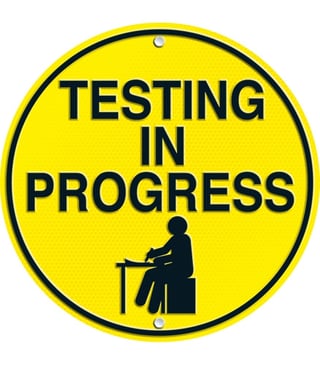Likes, shares, eyeballs and views. They are familiar metrics to any marketer in this digital age. But do business owners care about those metrics?
We’ve spoken to clients and friends (business owners, by the way) and what they really want is a good Return on Investment (ROI) on marketing and sales efforts. After all, what use is a job function or campaign that spends and spends without returning a clear result?
That’s why we think that including a business metric like Customer Acquisition Cost (CAC) in your reports will certainly help you – the intrepid marketer – to show that your marketing programs and campaigns really do have an effect on the business.
What is Customer Acquisition Cost (CAC) & Why Should I Care?
Customer Acquisition Cost is essentially the cost that a business spends to acquire a new customer.
This figure is an essential factor to consider during ROI decision-making. While soft metrics (e.g. likes, shares) might indicate healthy engagement with the brand, it does not necessarily indicate the eventual economic impact on the business.
Let’s take social media as an example.
According to Mzinga & Babson, 84% of marketers do not measure ROI for social media (src: Brian Solis). That’s a shame. We think that Marketers should relate Likes on a Facebook post to the eventual sales/customers from that post. Otherwise, what’s the use of it?
By looking at how much it costs to win over a new customer and the revenue that they return, any marketer can use Customer Acquisition Cost to balance out the usual marketing metrics and, more importantly, show the value of their marketing programs to their bosses!

3 Ways to Use Customer Acquisition Cost
1: Use it in Your Reports!
Do you get asked this:
You’ve got so many Facebook Likes and Website Traffic. What does it do for me [my business]?
That’s why we advocate using both soft and hard metrics in your reports.
It gives you credibility by showing that you are familiar with business realities and that your marketing programs are grounded in that reality. We find that showing awareness of such business realities often results in greater marketing influence in corporate decision making.
2: Troubleshoot Your Campaigns
Channels and tactics are a-dime-a-dozen, and it’s easy to assess them based on standard marketing metrics. But is it really effective?
That’s where a metric like CAC comes in. By using this metric, you can easily account for your marketing spend on your campaign efforts and decide where to optimize your campaigns.
For example, if your campaign is getting a lot of reach and conversions, but somehow your CAC has increased; then it’s probably time to look at economic inefficiencies in your campaign. Perhaps you’re spending too much on media buys. Or perhaps your consultants are spending too much time on sending out eDMs to new sign-ups. Once you’ve identified the problem areas, you can start optimising and troubleshooting with marketing automation, non-traditional approaches, or maybe even remove channels that aren't working for you.
3: Test Effectiveness of New Channels
We are fascinated with the latest, shiniest trends and channels.
R emember the “let’s all jump onto the Facebook bandwagon” era? Since then, we’re seeing quite a number of orphaned Facebook fanpages – particularly when businesses couldn’t relate Facebook engagement with actual business results.
emember the “let’s all jump onto the Facebook bandwagon” era? Since then, we’re seeing quite a number of orphaned Facebook fanpages – particularly when businesses couldn’t relate Facebook engagement with actual business results.
Using CAC as a metric to test new channels and efforts will help you decide if it’s worth your time and energy. That gives you the focus and wherewithal to maximise your customer conversions and acquisitions.
How to Calculate CAC Metrics in 2 Steps
Just total your sales and marketing costs – inclusive of overhead and headcount-related expenses if you wish – then divide that by the number of customers you acquired within that same given period.
Step 1: Total Your Expenditure
Add program and advertising spending. Add staff salary, including bonuses and commission. Add, lastly, any overheads.
Step 2: Get Your CAC
Divide the above amount by the number of customers acquired in the same period of spend (month, quarter, or year).
And that’s your Customer Acquisition Cost!
For example, a web-solutions business might spend $50,000 on an off-site roadshow that lasted a month. During that month, they saw 1,000 new customers. This equates to a CAC of $50. This CAC is superior to a print-coupon method that costs $100,000 to print and distribute, which results in a CAC of $100.
Hopefully, we’ve showed that it’s actually quite easy and necessary to highlight the ROI of your marketing campaigns.
Like this blog post? You might also want to download our ROI Reporting Template or subscribe to our ROI in Marketing series.